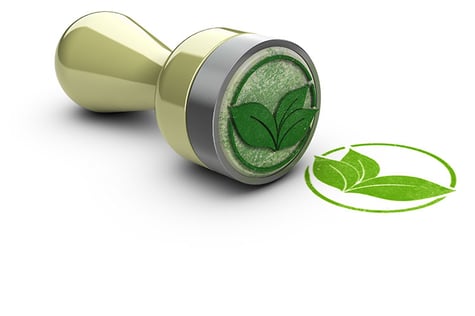
Every facility manager has budget constraints, and that means you have to make some choices about priorities. Decisions often lean toward “tyranny of the urgent” – you need a new roof, you need to repave the parking lot, etc. Things like launching sustainability initiatives and becoming LEED certified can seem like a luxury…but they aren’t.
According to the Green Industry Analysis 2016 report, green initiatives “not only enjoy favorable public sentiment and the psychic income of a lower carbon footprint, but increased cost savings, supportive government policies, and ever-increasing profitability as well.” Moreover, “…trends in consumption, government policy, and costs all point towards even more green industry business opportunities in the years ahead.”
So if your building needs a new roof – or you’re planning construction of a new roof – what are the advantages of getting that roof LEED certified?
LEED Certification: What It Is And How It Works
LEED certification, an initiative of the U.S. Green Building Council (USGBC), stands for Leadership in Energy and Environmental Design. Businesses all over the world have made LEED the most widely used third-party certification for green buildings, with more than 1.85 million square feet being LEED certified each day. Projects earn points for meeting certain specifications, and the total determines your level of LEED certification: Certified, Silver, Gold, and Platinum. “Certified” – the baseline status – requires 26 credits for new construction and 39 credits for existing buildings.
How Can My Roof Earn LEED Credits?
One of the primary ways your roof can earn LEED credits is through your choice of materials. Reflective membranes and coatings, for example, can earn LEED credits if at least 75% of the roof area has a Solar Reflective Index of at least 78 for a low-slope roof and 29 for a steep-slope roof. Other ways to earn points include:
- Achieving a Minimum Energy Performance rating that exceeds ASHRAE/IESNA standards by at least 10% for new construction or 5% for renovations
- Using recycled materials
- Using building materials that have been extracted, harvested, recovered, or manufactured within 500 miles of the job site
- Exceeding ASHRAE standards for thermal comfort
There are further opportunities for points depending on things like type of construction and the building’s purpose (school, retail, data centers, warehouses, healthcare facilities).
How Do I Get Started?
LEED certification starts with submitting an application for your project. That includes completing paperwork and paying a processing fee. Next, you submit your application through LEED Online. Finally, your application is reviewed by the USGBC, and you’re awarded a level of LEED certification based on the total number of points your building/project earned.
Despite the proven benefits of becoming LEED certified, you might not be ready to replace your roof for that reason alone. But if it’s time for a new roof anyway – or if you’re doing either a complete renovation or constructing a new building – it’s the perfect time to make the choices that will help you achieve LEED certification. Between the impact on the environment, the positive PR, and the potential financial benefits, it’s just too good an opportunity to pass up.





